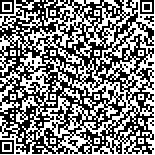| 引用本文: |
肖亚辉,谭洁.电针结合运动想象疗法治疗脑卒中后肩手综合征Ⅰ期的临床观察[J].湖南中医药大学学报,2024,44(2):314-319[点击复制] |
|
| |
|
|
| 本文已被:浏览 1531次 下载 687次 |
| 电针结合运动想象疗法治疗脑卒中后肩手综合征Ⅰ期的临床观察 |
| 肖亚辉,谭洁 |
| (湖南中医药大学针灸推拿康复学院, 湖南 长沙 410208;湖南省人民医院(湖南师范大学附属第一医院)康复医学科, 湖南 长沙 410016) |
| 摘要: |
| 目的 观察电针结合运动想象疗法对脑卒中后肩手综合征Ⅰ期患者的临床疗效。方法 将60例符合纳入标准脑卒中后肩手综合征Ⅰ期患者随机分配为运动想象疗法组(A组)、电针治疗组(B组)和电针结合运动想象疗法组(C组),每组20例。3组都给予常规的康复治疗,A组增加运动想象治疗,B组增加电针治疗,C组增加电针联合运动想象疗法。治疗2周后,比较数字疼痛评定量表(numeric rating scale, NRS)、患手肿胀程度评定、关节被动活动度(passive range of motion, PROM)、Fugl-Meyer运动功能评定量表上肢部分(upper fugl-meyer assessment, U-FMA)、Barthel指数(Barthel index, BI)和临床疗效。结果 (1)治疗后,3组患者在NRS评分、手部肿胀程度均较治疗前降低(P<0.05);C组NRS评分低于A组(P<0.05),C组较B组在NRS评分的差异无统计学意义(P>0.05);C组手部肿胀程度低于B组(P<0.05),C组较A组手部肿胀程度的差异无统计学意义(P>0.05);A、B两组间NRS评分、手部肿胀程度差异无统计学意义(P>0.05)。(2)治疗后,3组在肩关节各被动活动度较治疗前增大(P<0.01); C组在肩关节前屈、后伸、外展和内外旋的被动活动度较A、B组增大(P<0.01);A、B两组间差异无统计学意义(P>0.05)。(3)治疗后,3组的U-FMA评分和BI评分较治疗前升高(P<0.05);3组的U-FMA和BI评分结果显示,C组较A、B组更高(P<0.05),A、B两组间差异无统计学意义(P>0.05)。(4)A组总有效率是85%,B组总有效率是90%,C组总有效率是95%,C组较A、B组差异有统计学意义(P<0.05),A、B两组间差异无统计学意义(P>0.05)。结论 3组患者经治疗在疼痛、手部肿胀、上肢运动功能和日常生活活动能力方面均得到明显改善;且与单独的电针和运动想象疗法相比,电针联合运动想象治疗肩手综合征有明显的疗效优势。 |
| 关键词: 脑卒中 肩手综合征 针刺 电针 运动想象疗法 疼痛 康复 |
| DOI:10.3969/j.issn.1674-070X.2024.02.020 |
| 投稿时间:2023-09-17 |
| 基金项目:湖南省卫生健康委员会科研项目(2021103070833);湖南省中医药科研计划项目(2021233);湖南中医药大学医学技术一流学科开放基金项目(2021YXJS01)。 |
|
| Clinical observation on electroacupuncture combined with motor imagery training in treating stage Ⅰ post-stroke shoulder-hand syndrome |
| XIAO Yahui,TAN Jie |
| (School of Acupuncture-moxibustion, Tuina and Rehabilitation, Hunan University of Chinese Medicine, ChangSha, Hunan 410208, China;Department of Rehabilitation Medicine, Hunan Provincial People's Hospital (The First Hospital of Hunan Normal University), ChangSha, Hunan 410016, China) |
| Abstract: |
| Objective To observe the clinical efficacy of electroacupuncture(EA) combined with motor imagery training(MIT on patients with stage Ⅰ post-stroke shoulder-hand syndrome(SHS).Methods Sixty patients with stage Ⅰ post-stroke SHS who met the inclusion criteria were randomized into MIT(Group A), EA(Group B), and EA combined with MIT(Group C) groups, with20 patients in each group. Besides routine rehabilitation treatment to all three groups, Group A was additionally treated with MIT,Group B with EA therapy, and Group C with a combination of EA and MIT. After 2 weeks of treatment, the numerical rating scale(NRS) score, swelling degree in the affected hand, passive range of motion(PROM), upper fugl-meyer assessment(U-FMA) score,Barthel index(BI) score, and clinical efficacy among the three groups were compared. Results(1) After treatment, the NRS score and hand swelling degree of all three groups decreased compared with those before treatment(P<0.05); the NRS score of Group C was lower than that of Group A(P<0.05), and there was no statistically significant difference in it between Group C and Group B(P>0.05); the hand swelling degree in Group C was lower than that in Group B(P<0.05), and there was no statistically significant difference in it between Group C and Group A(P>0.05); there was no statistically significant difference in the NRS score and hand swelling degree between Group A and Group B(P>0.05).(2) After treatment, the PROM of the shoulder joints in all three groups increased compared with that before treatment(P <0.01); the PROM in shoulder flexion, extension, abduction, and internal and external rotations in Group C increased compared with that in Group A and B(P<0.01), and there was no statistically significant difference in it between Group A and B(P>0.05).(3) After treatment, the U-FMA and BI scores of all three groups increased compared with those before treatment(P<0.05); the U-FMA and BI scores in Group C were higher than those in Group A and B(P<0.05), and there was no statistically significant difference in them between Group A and B(P>0.05).(4) The total effective rates of Group A, B, and C were 85%, 90%, and 95%, respectively. There was a statistically significant difference in it between Group C and Group A and B(P<0.05), while no statistically significant difference between Group A and Group B(P>0.05).Conclusion All three groups showed significant improvements in pain, hand swelling, upper limb motor function, and daily living activities after treatment; compared with EA and MIT alone, the combination of EA and MIT has significant therapeutic advantages in treating SHS. |
| Key words: stroke shoulder-hand syndrome acupuncture electroacupuncture motor imagery training pain rehabilitation |
|

二维码(扫一下试试看!) |
|
|
|
|




